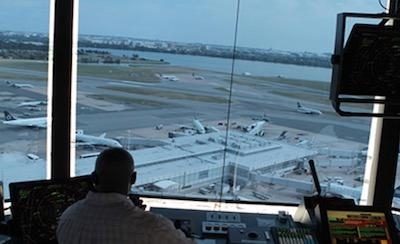Thu, Apr 25, 2024
NTSB Praises New FAA Policy on Controller Rest and Duty Time
The NTSB has long highlighted the risks associated with fatigue among air traffic controllers, advocating for changes to ensure they receive adequate rest. Recently, NTSB Chair Jennifer Homendy praised the new FAA regulation requiring air traffic controllers to have at least 10 hours off between shifts and 12 hours off before a midnight shift. This policy adjustment aims to enhance safety by ensuring controllers are well-rested and alert.

This initiative comes after tragic incidents that underscored the severe implications of controller fatigue. A notable example is the Comair flight 5191 crash on August 27, 2006, in Lexington, Kentucky, where 49 lives were lost when a plane took off from the wrong runway. The controller on duty had returned to work just nine hours after completing his previous shift, having managed only a two-hour nap in the interim. The lack of rest was pointed out in the investigation as a significant factor contributing to the accident.
Another incident that brought this issue to the forefront occurred on March 23, 2011, at Ronald Reagan Washington National Airport. An air traffic controller fell asleep during a midnight shift, leading to a situation where two commercial airplanes landed without assistance from the control tower. The NTSB investigation attributed the controller's lapse to acute fatigue, exacerbated by consecutive midnight shifts and scheduling practices that did not allow for sufficient rest.

Homendy's remarks underline the ongoing concern and need for systemic changes in how air traffic controllers' shifts are scheduled. "We have been calling for action on controller fatigue for more than 18 years," Homendy stated, expressing her approval of the FAA's decision while also acknowledging that more efforts are needed to fully address the issue.
This recent mandate by the FAA is seen as a significant step towards rectifying long-standing safety concerns, aiming to prevent the type of errors that can lead to catastrophic consequences. The focus on adequate rest aligns with broader safety management strategies essential for the high-stakes nature of air traffic control.
More News
Touchdown Zone Lighting Two rows of transverse light bars located symmetrically about the runway centerline normally at 100 foot intervals. The basic system extends 3,000 feet alon>[...]
“Discovery and innovation are central to our mission at Virgin Galactic. We’re excited to build on our successful record of facilitating scientific experiments in subor>[...]
"We are reaching out to you today on behalf of the Popular Rotorcraft Association because we need your help. We are dangerously close to losing a critical resource that if lost, wi>[...]
UAS Traffic Management (UTM) The unmanned aircraft traffic management ecosystem that will allow multiple low altitude BVLOS operations and which is separate from, but complementary>[...]
Aero Linx: Society of Aviation and Flight Educators (SAFE) SAFE is a member-oriented organization of aviation educators fostering professionalism and excellence in aviation through>[...]
 ANN's Daily Aero-Term (05.02.24): Touchdown Zone Lighting
ANN's Daily Aero-Term (05.02.24): Touchdown Zone Lighting Aero-News: Quote of the Day (05.02.24)
Aero-News: Quote of the Day (05.02.24) Aero-News: Quote of the Day (05.03.24)
Aero-News: Quote of the Day (05.03.24) ANN's Daily Aero-Term (05.03.24): UAS Traffic Management (UTM)
ANN's Daily Aero-Term (05.03.24): UAS Traffic Management (UTM) ANN's Daily Aero-Linx (05.03.24)
ANN's Daily Aero-Linx (05.03.24)




